Slow-Roasted Salmon with French Herb Salsa
This post may contain affiliate links. Read my full disclosure policy.
Hosting made easy and elegant: let this slow-roasted salmon be the stress-free star of your brunch or buffet.
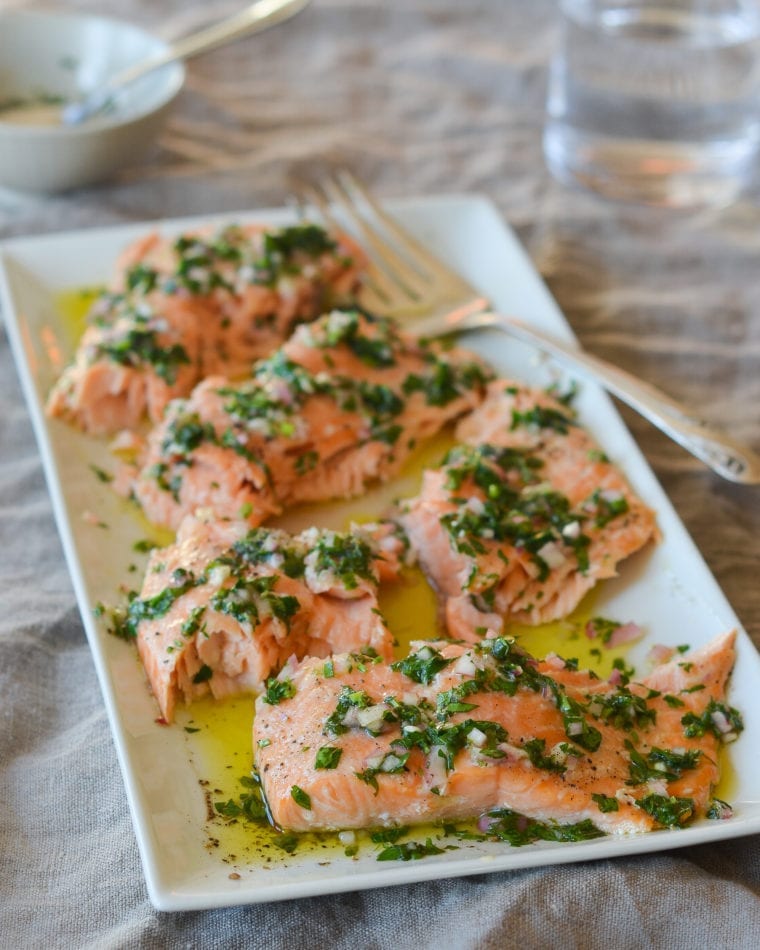
This slow-roasted salmon recipe, a gem from Samin Nosrat’s acclaimed Salt, Fat, Acid, Heat, has become a favorite in my kitchen. Samin’s method of slow-roasting the salmon is genius—the low heat makes it almost impossible to overcook the fish. In fact, the fish stays tender and slightly translucent, even when fully cooked. As with many of her recipes, Samin provides a general technique for cooking the salmon, along with variations and sauces. I like to pair the salmon with a vibrant French herb salsa, a simple mix of macerated shallots, olive oil, and fine herbs that you can whip up in no time.
Whether served hot, cold, or at room temperature (my favorite), this salmon is always a showstopper, especially at holiday buffets. Plus, the ability to make it ahead of time is a lifesaver for stress-free hosting.
Table of Contents
What you’ll need To Make Slow-Roasted Salmon
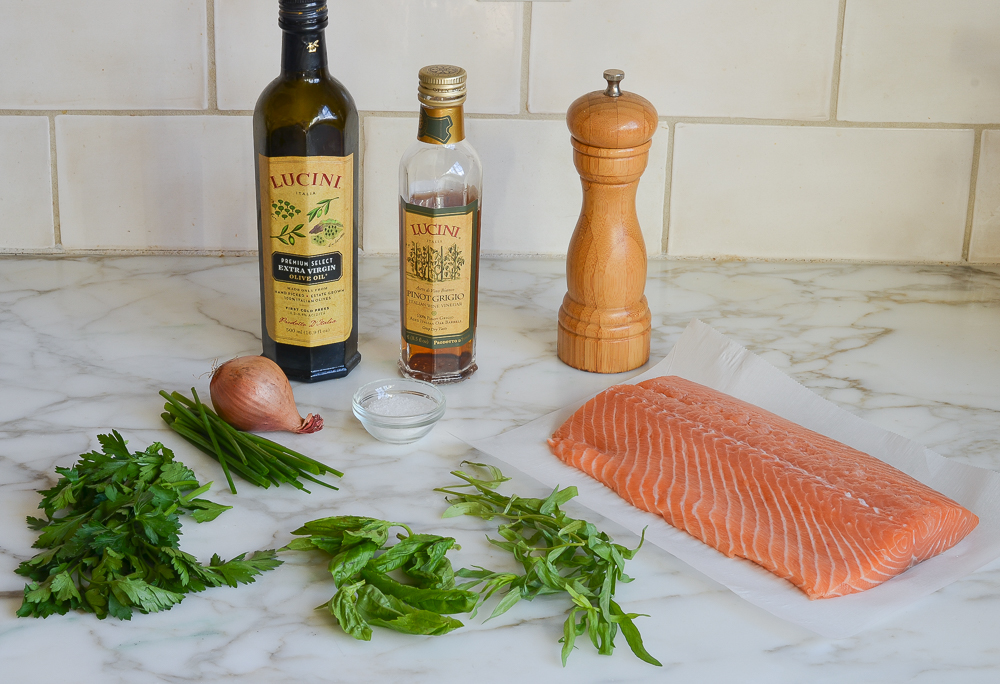
Step-by-Step Instructions
To begin, place the salmon on a baking sheet. Drizzle with the olive oil and sprinkle the salt evenly over top.
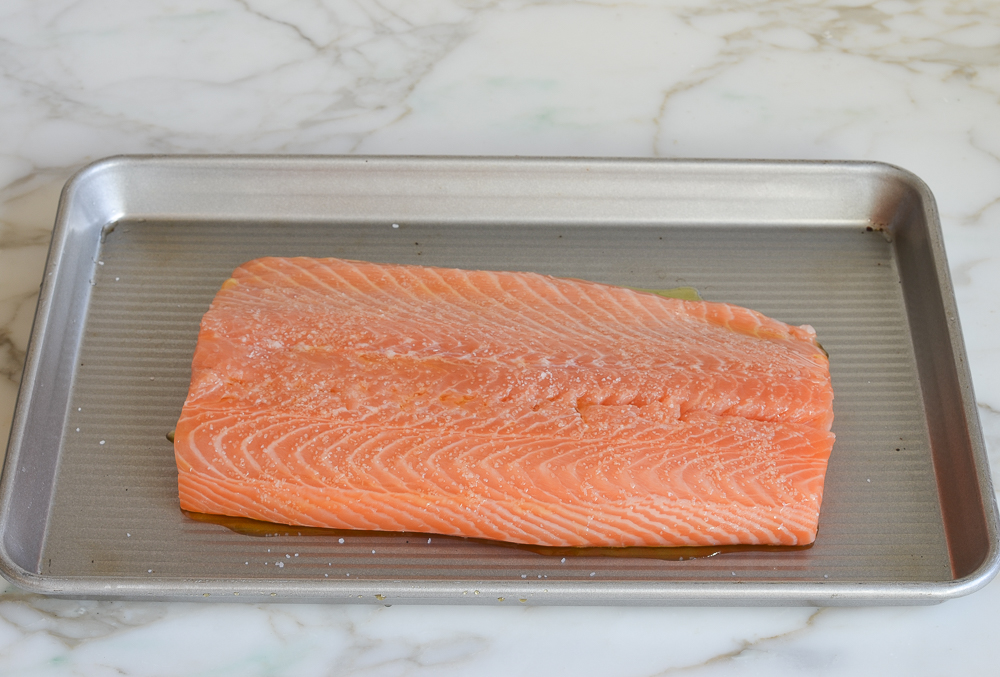
Slide the pan into the oven, which has been preheated to 225°F, and roast for 40 to 50 minutes, until the fish begins to flake in the thickest part of the filet when poked with a knife or your finger. (Because this method is so gentle on its proteins, the fish will appear translucent even when it’s cooked.) Don’t worry if any white coagulated proteins form on the fish; just scrape them off with a spoon.
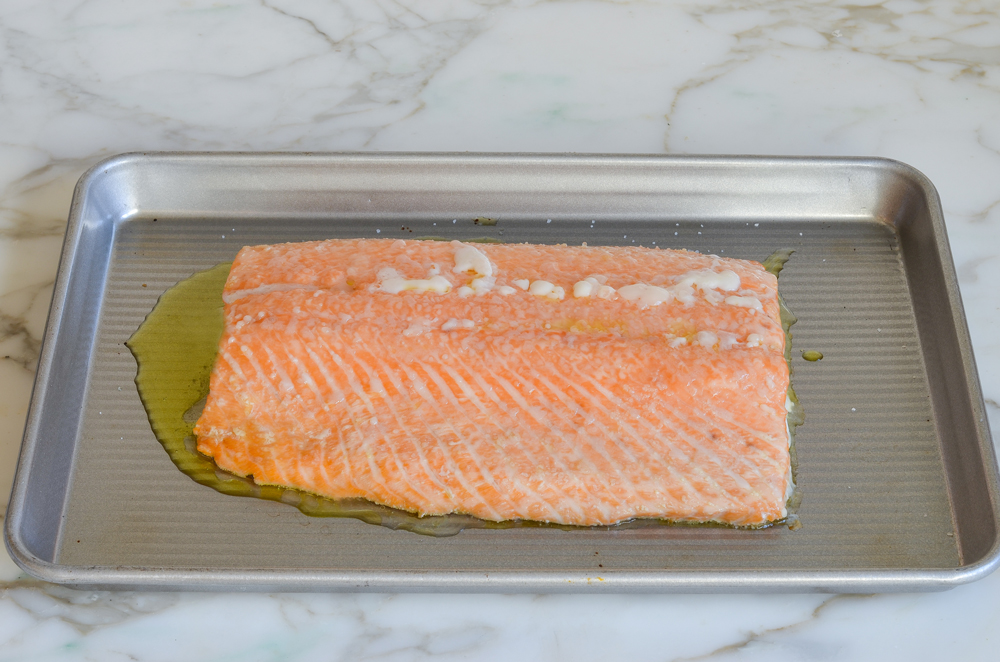
Meanwhile, in a small bowl, combine the shallot and vinegar and let sit for 15 minutes to macerate.
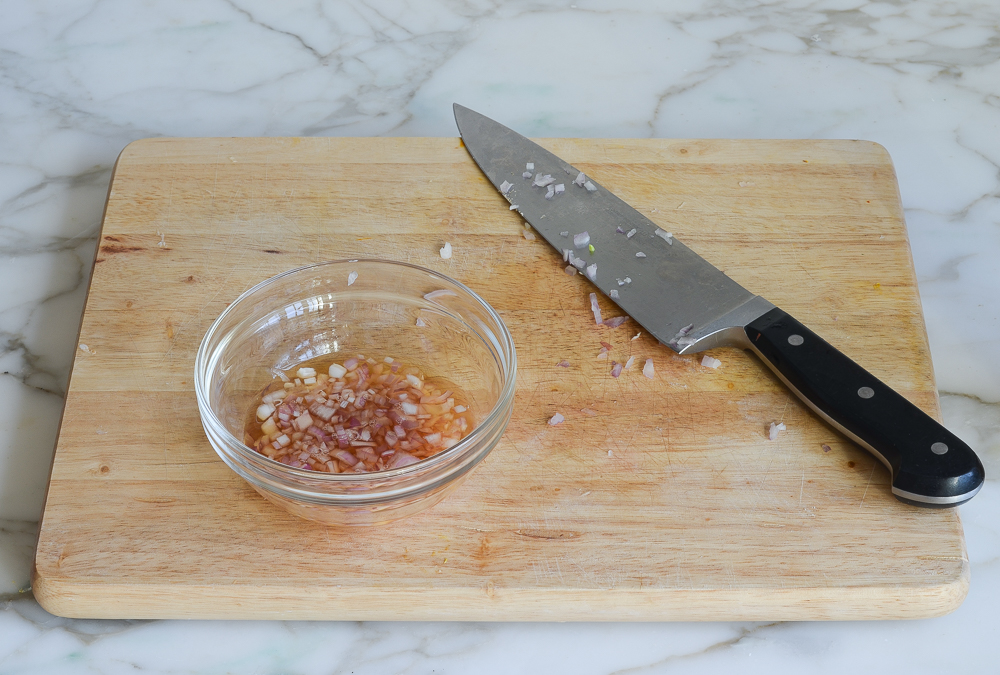
In a separate small bowl, combine the herbs, olive oil, salt, and a few grinds of black pepper.
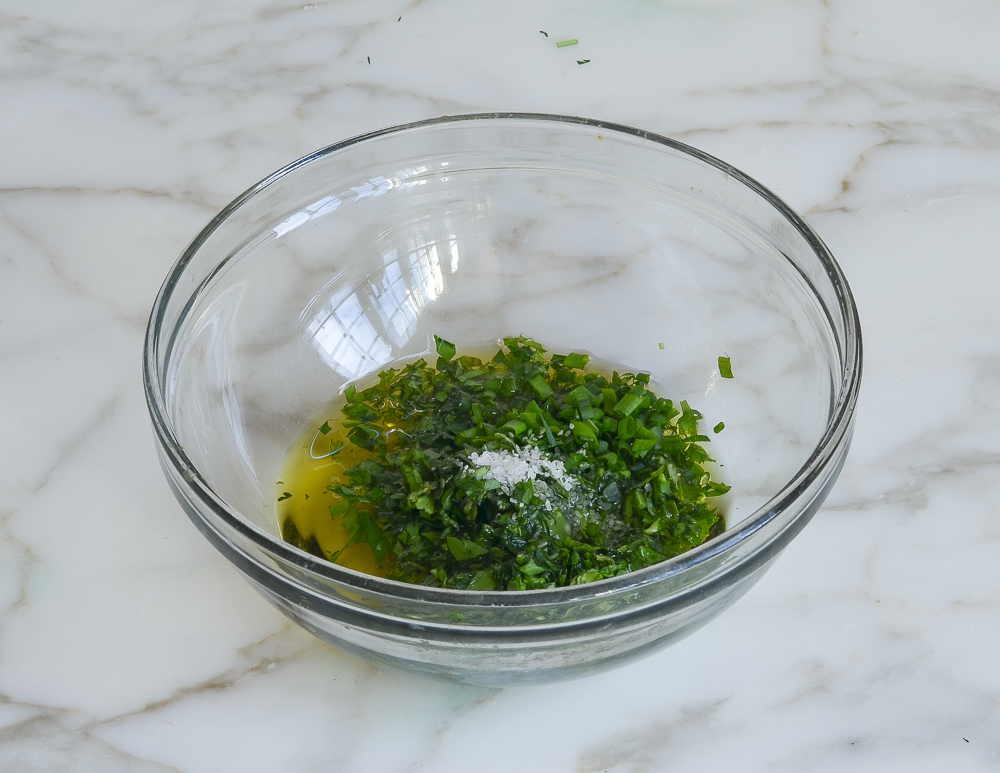
Just before serving, use a slotted spoon to add the shallot (but not the vinegar, yet) to the herb oil.
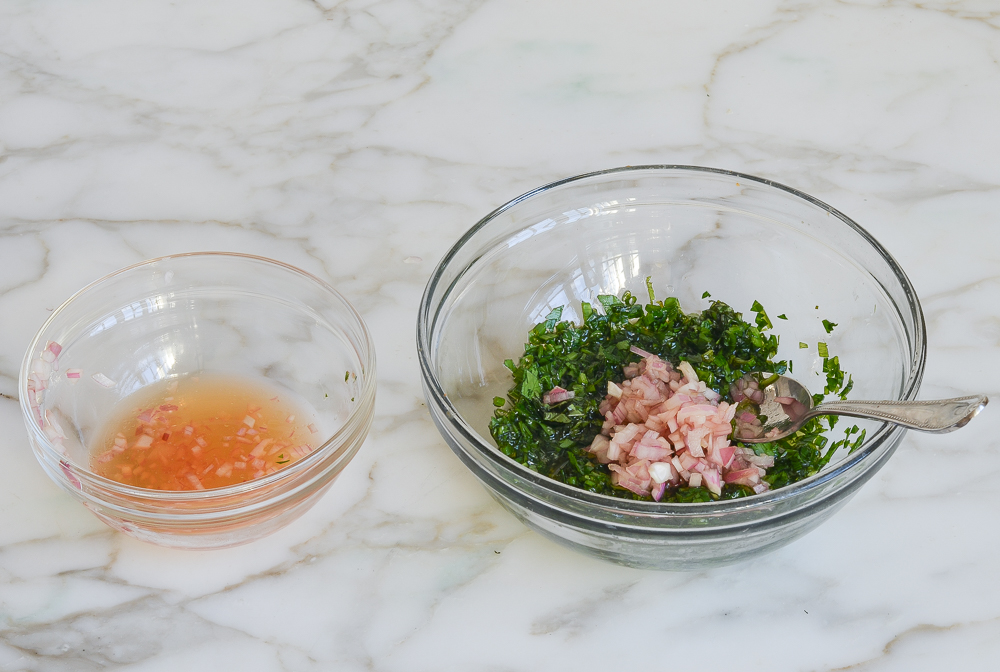
Stir, taste, and add the vinegar as needed (I usually add 2 to 3 teaspoons). Taste and adjust salt, if necessary.
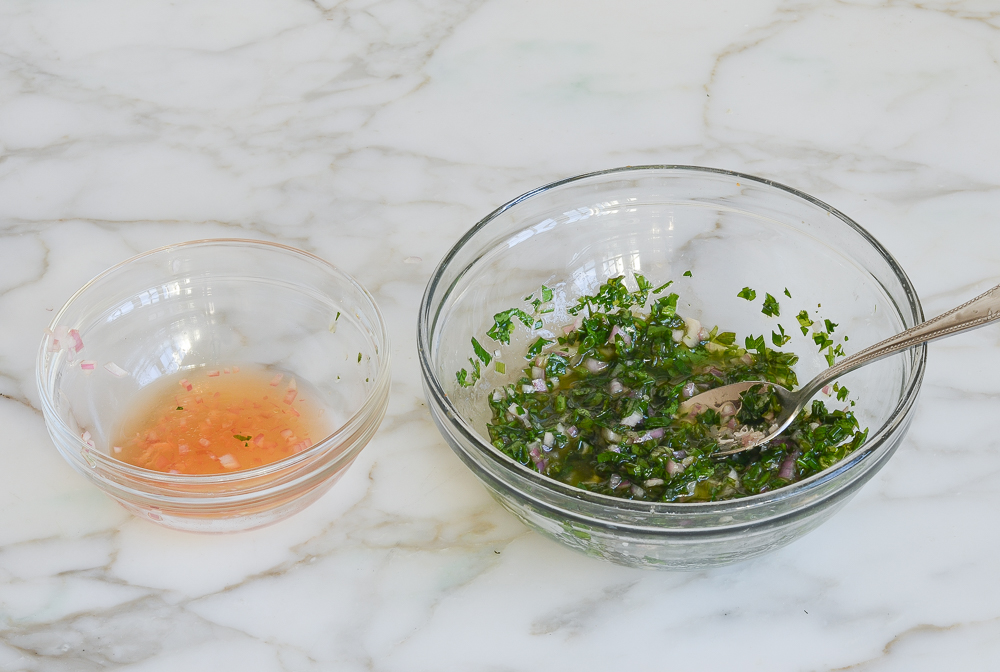
Break the salmon into large, rustic pieces and spoon the French herb salsa over top.
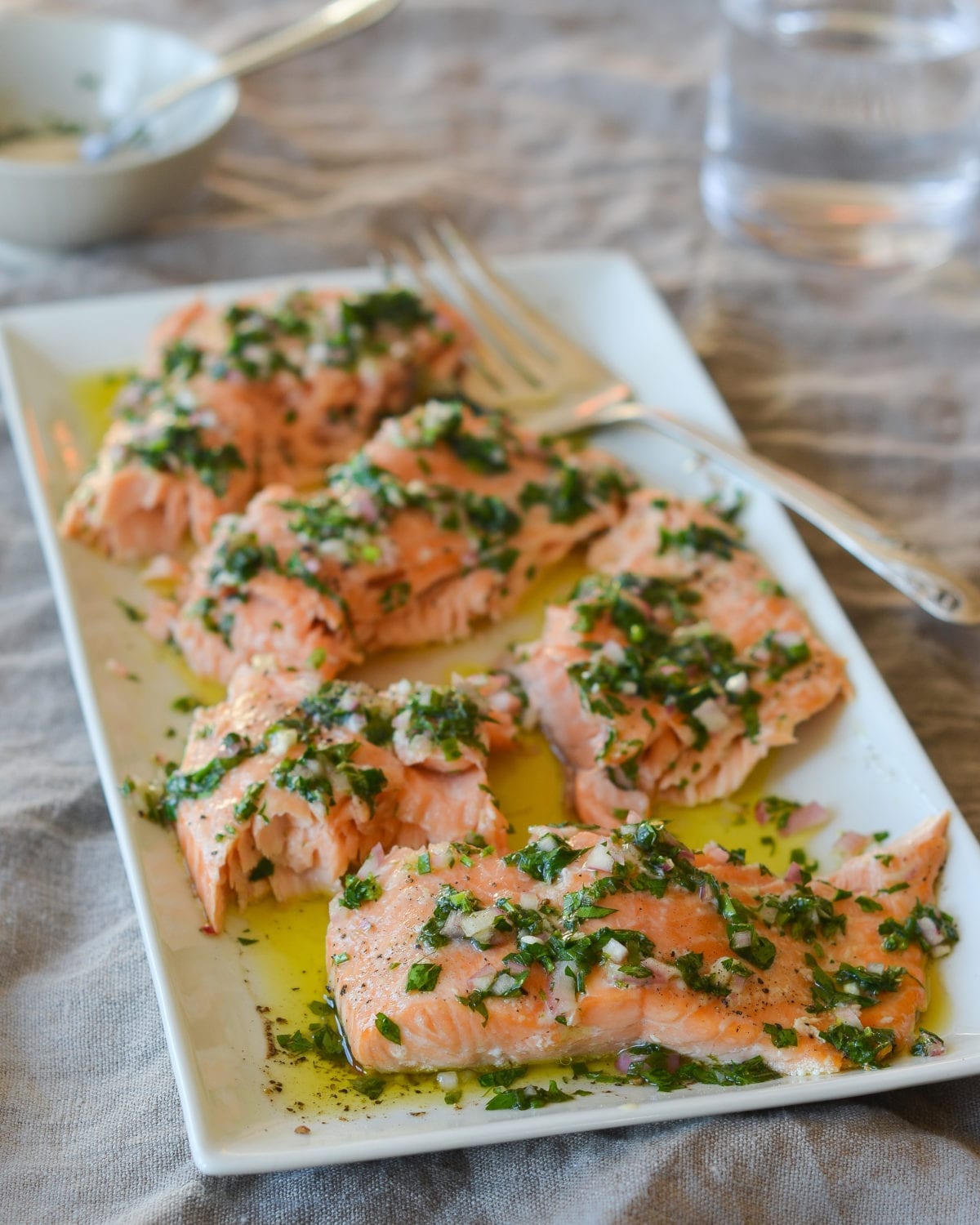
You may also like
Slow-Roasted Salmon with French Herb Salsa
Hosting made easy and elegant: let this slow-roasted salmon be the stress-free star of your brunch or buffet.
Ingredients
For the Salmon
- One (2-lb) salmon filet, pin bones and skin removed
- 1 tablespoon extra-virgin olive oil
- ¾ teaspoon kosher salt
For the French Herb Salsa
- 3 tablespoons finely diced shallot, from 1 medium shallot
- 3 tablespoons white wine vinegar
- 2 tablespoons very finely chopped fresh Italian parsley
- 1 tablespoon very finely chopped fresh chervil (okay to substitute more parsley if you can't find it)
- 1 tablespoon very finely chopped fresh chives
- 1 tablespoon very finely chopped fresh basil
- 1 teaspoon very finely chopped fresh tarragon
- 5 tablespoons extra-virgin olive oil
- ¼ teaspoon kosher salt
- Freshly ground black pepper
Instructions
For the Salmon
- Preheat the oven to 225°F and set an oven rack in the middle position.
- Place the salmon on a baking sheet. Drizzle with the olive oil and sprinkle the salt evenly over top. Slide the pan into the oven and roast for 40 to 50 minutes, until the fish begins to flake in the thickest part of the filet when poked with a knife or your finger. (Because this method is so gentle on its proteins, the fish will appear translucent even when it's cooked.) Using a small spoon, scrape off any white coagulated proteins that may have formed on the salmon.
- Break the salmon into large, rustic pieces and spoon the French herb salsa (below) over top. This dish can be served hot, cold, or room temperature.
For the French Herb Salsa
- In a small bowl, combine the shallot and vinegar and let sit for 15 minutes to macerate.
- In a separate small bowl, combine the herbs, olive oil, salt, and a few grinds of black pepper.
- Just before serving, use a slotted spoon to add the shallot (but not the vinegar, yet) to the herb oil. Stir, taste, and add the vinegar as needed (I usually add 2 to 3 teaspoons). Taste and adjust salt, if necessary.
- Make-Ahead Instructions: The salmon can be cooked 1 day ahead of time, covered with plastic wrap, and refrigerated. The French herb salsa can be made, covered, and refrigerated up to 2 days ahead of time.
Nutrition Information
Powered by ![]()
- Per serving (6 servings)
- Calories: 439
- Fat: 34 g
- Saturated fat: 6 g
- Carbohydrates: 1 g
- Sugar: 0 g
- Fiber: 0 g
- Protein: 31 g
- Sodium: 405 mg
- Cholesterol: 83 mg
This website is written and produced for informational purposes only. I am not a certified nutritionist and the nutritional data on this site has not been evaluated or approved by a nutritionist or the Food and Drug Administration. Nutritional information is offered as a courtesy and should not be construed as a guarantee. The data is calculated through an online nutritional calculator, Edamam.com. Although I do my best to provide accurate nutritional information, these figures should be considered estimates only. Varying factors such as product types or brands purchased, natural fluctuations in fresh produce, and the way ingredients are processed change the effective nutritional information in any given recipe. Furthermore, different online calculators provide different results depending on their own nutrition fact sources and algorithms. To obtain the most accurate nutritional information in a given recipe, you should calculate the nutritional information with the actual ingredients used in your recipe, using your preferred nutrition calculator.
Gluten-Free Adaptable Note
To the best of my knowledge, all of the ingredients used in this recipe are gluten-free or widely available in gluten-free versions. There is hidden gluten in many foods; if you're following a gluten-free diet or cooking for someone with gluten allergies, always read the labels of your ingredients to verify that they are gluten-free.

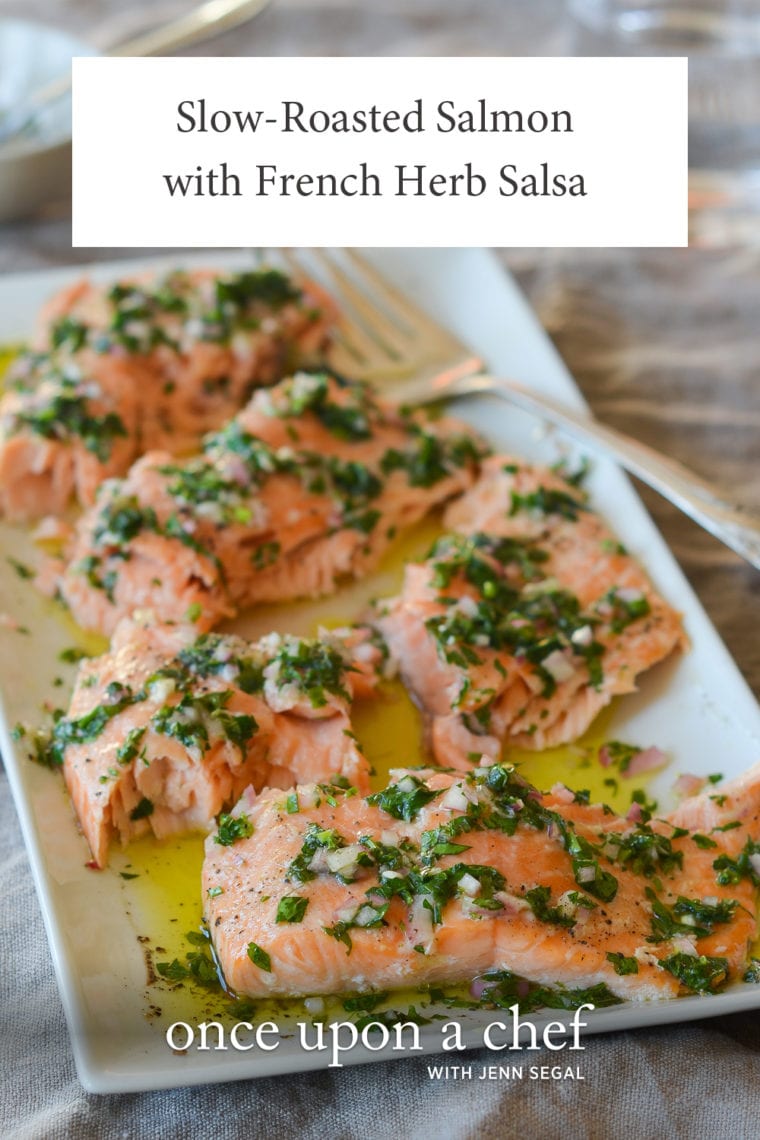
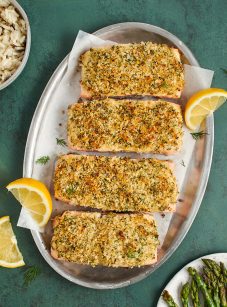
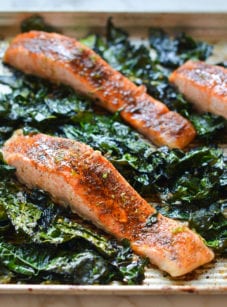
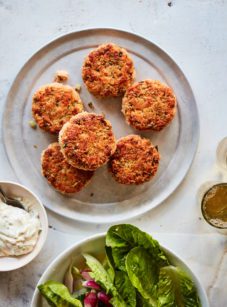
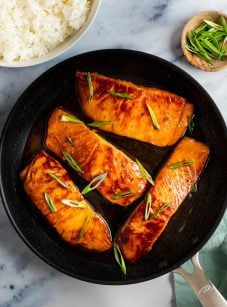
I tried this low temperature cooking method with steelhead trout as well and the result was fabulous. I don’t think I will use any other temp from now on! Thanks!
We’re not big tarragon fans. Would fresh mint work well? Other suggestions?
Karen
Hi Karen, I would just leave it out. Enjoy! 🙂
I have never commented on a recipe, but this was SO good, I had to add my endorsement. Slow roasting was a revelation to me in terms of the creamy texture and the salsa was such a light touch, we all loved it, even my young kids. I served it with a garlic/olive oil couscous and a simple green salad. Thanks so much, Jenn!
Glad you enjoyed it – thanks for leaving a review! 🙂
Ah!
And I just looked at the leftovers, stil bright green!
The sauce, of course! Ha!
I want to bring this to an open house party with heavy appetizers. Would you suggest bread slices or crackers or something else to serve with it?
Hi Nancy, This dish really stands on its own, but I think a sliced baguette or rolls would be nice.
Outstanding! Another addition to my “cook-once-eat-twice” recipes! Particularly useful for the busy household where everyone doesn’t sit down to dinner at the same time (as in “Mom, I want to go work out before I eat dinner.”) Thanks again Jenn!
I used one of Costco’s giant salmon filets and it cooked perfectly with the instructions provided. It was marvelous, there wasn’t a morsel left. ( I have to admit the protein accumulated on the top is a little gross.) The salsa is delicious and makes a generous amount. I can’t wait to make it again.
I use a helpful hint that I once found on the internet. To prevent the white stuff oozing, use a salmon brine. 1 Tablespoon salt to 1 cup of water, for 10 minutes. After I do it, I sometimes give the salmon a quick rinse and then pat dry with paper towels, although I’m not sure that’s necessary.
Hi Jenn,
I am planning to make this recipe tomorrow. I have 4 (7oz) salmon filets in the freezer. Should I thaw them overnite in the fridge or can I slow roast them from the frozen state?
I have purchased your cookbook and want to say thanks for the many recipes from it that I have made. I have yet make a recipe that I did not rate as “fantastic!” Purchased a copy for my new DIL FOR Christmas; she was thrilled!
So happy you’re enjoying the cookbook, Marilyn! I would defrost the salmon overnight for best results. 🙂
Do you think the less oily Sockeye and Coho salmons would work? They tend to be thinner so cooking time would be less, but do you think they have enough oil content?
Hi Kate, This method does work best with fattier fish, but I think those would be fine.
My husband can’t have any vinegar except white distilled. Is there a substitute I could use for the white wine vinegar?
Hi Rachelle, Lemon juice would work beautifully.
Hey Jenn, I’m a parsley hater 🙊 but would love to try this. Do you suggest any other herb to sub? Or just omit the parsley?
Hi Erin, You could use more chervil, but that’s very similar to parsley so not sure how you feel about that. 🙂 Otherwise, you can just use more of the other herbs (although I wouldn’t add more tarragon as it’s strong in flavor).